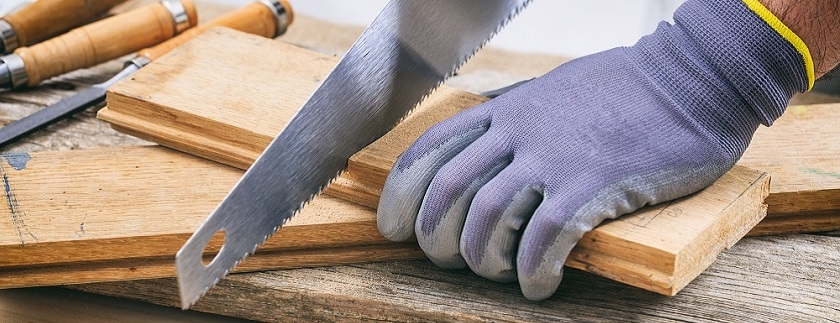When carrying out woodworking or various DIY tasks, a saw is an essential bit of kit. For basic work you’ll need two basic saws – the handsaw and the backsaw. For more specific jobs you’ll need something designed specifically for that job – and deviating from this can impact the results of your work.
A saw works by the action of its teeth on the wood fibres when you push it backwards and forwards. The shape of the teeth is important and the number of teeth too, with the higher Teeth Per Inch (TPI) giving a higher quality cut.
Traditionally saws are either cross-cut sharpened saws or rip-sharpened. Cross-cut saws have a slope at the front of the tooth and are the best for cross-grain work, with rip-sharpened saws best for cutting with the grain.
Here are the basic range of saws you’ll come across for DIY and woodworking jobs:
Handsaw – used for all rough cutting and often comes with forward and reverse cutting. It’s also likely to have hardpoint teeth for precision cuts which means they have induced-hardened teeth so have a long life. If you only want to buy one saw this is probably the best choice.
Backsaw – Also known as tenon saw or dovetail saw. Used for more refined work. Smaller than a handsaw and has a rigid back to keep the blade firm and give weight to the saw to aid the cut. A great saw for all detailed work.
Coping Saw –The blade on a coping saw is thin and as is soft enough to be used on detail, which means it’s replaceable. It’s ideal for cutting intricate shapes and can be turned 360 degrees for flexibility. Can also be used on metal.
Quarter Saw – The close quarter saw is suitable for cutting thin materials including steel, aluminium, wood, plastic or plasterboard, for instance. It takes hacksaw blades so works in a similar way to a hacksaw but the grip means it can get into tight spots. Usually comes with a spirit level so you can get accuracy at all angles.
Hacksaw – the best saw for use with metal as that is its original design. Has a narrow fine-toothed blade that won’t get caught up in the grain. It’s often the saw of choice for plastics and thin wood because of its lightweight frame yet strength in cutting.
Specialist saws – saws such as wall board saws exist for particular shapes and jobs that hacksaws and handsaws can’t handle. The Wall board saw for instance has a sharpened tip for plunge cuts. There’s also fret saws (for shaping veneer), bow saws (excellent for tree branches and logs) and Japanese saws (with complex tooth geometry for intricate work).
The shape and size of the work you’re carrying out will often be the first indicator as to which saw to use, as well as the material you are trying to cut. Of course, if you’ve got a lot to cut, it may be worth looking into mechanically powered saws with circular blades, offering speed and precision.



